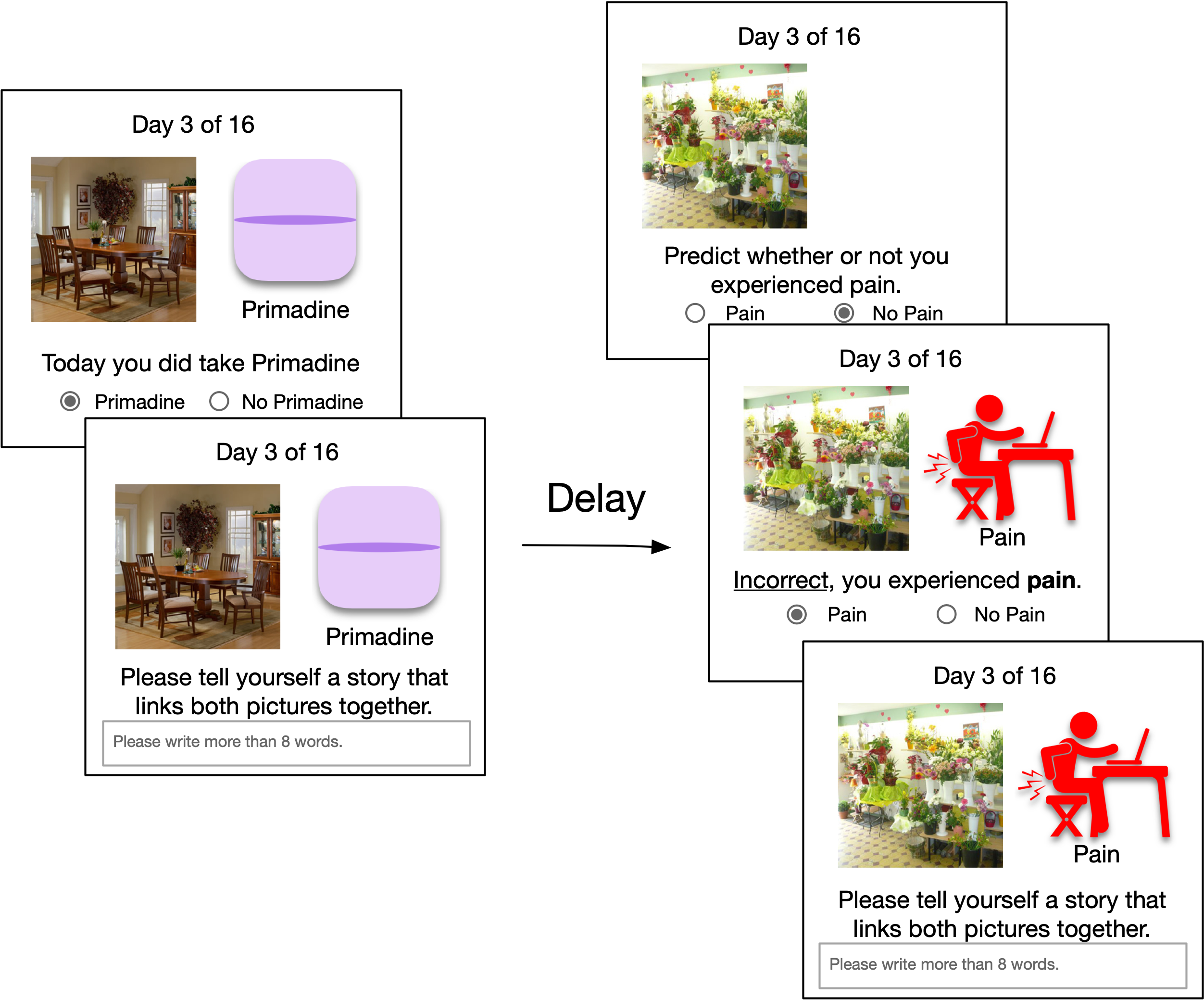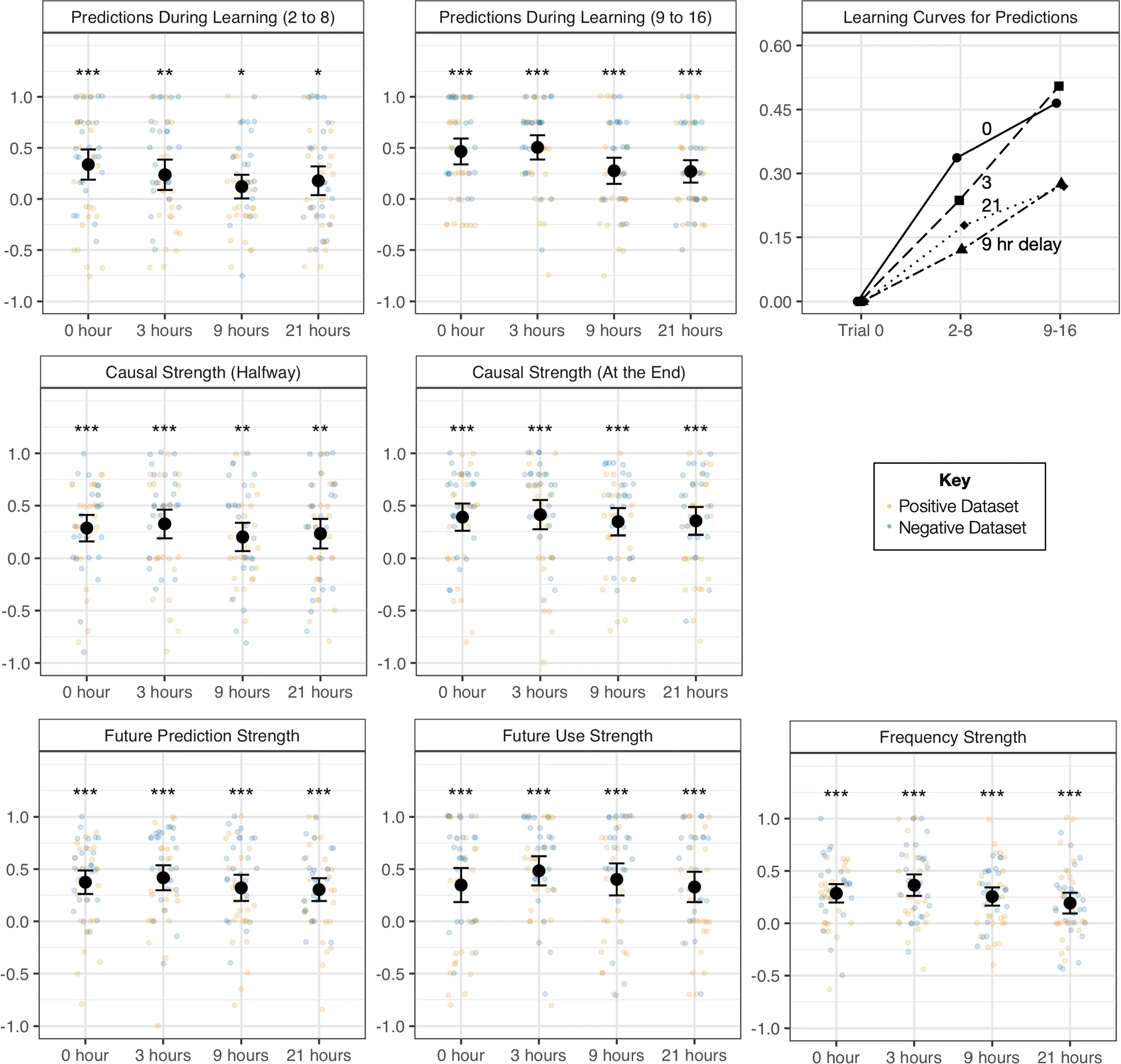I have a fairly straightforward relationship with dairy: I partake in its delicious fruits semi-regularly and it, in turn, completely devastates my guts. Yet despite this connection between lactose consumption and gastrointestinal distress—a correlation that I can only describe as very strong—it somehow took me several years to fully realize that, yes, I’m lactose intolerant.

As a cognitive psychologist who also loathes to acknowledge personal flaws—a tendency for denial? Not likely!—I do wonder why it took me so long to comprehend the relationship between a causal event (like eating ice cream) and the ensuing consequence (which I’ll decline to describe for this particular example). One hypothesis: maybe the amount of time between the causal event and its effect was long enough that I simply didn’t connect the two.
In fact, it isn’t clear how the amount of time between a cause and an effect could influence how well people learn that causal relation. Is it harder to figure out what causes certain effects, if the time between them is on the order of hours? Yiwen Zhang and Benjamin M. Rottman investigated exactly this in their recent study, “Causal learning with delays up to 21 hours,” published as a brief report in Psychonomic Bulletin & Review.

To study how people learn to associate an effect with a previous causal event, Zhang and Rottman told their participants to imagine that they were taking a new medication and that they needed to figure out if the medication caused feelings of arthritic pain to be reduced, to be worsened, or had no effect. There were no genuine feelings of pain; the study was conducted with a simple behavioral paradigm where participants were simply told whether or not they felt imaginary pain from an imaginary drug. Additionally, while the authors did later find that their participants were biased to believe that the medication would reduce pain levels, they did balance their study design to include conditions where the medication enhanced pain.
Over the course of 16 days, over 200 participants performed a task that presented a causal event (which prompted them to imagine taking the medication or not taking it), which was followed sometime later in the day by an effect task (which prompted whether or not they “felt” pain). These tasks, each of which was only presented once per day, were completed on participants’ cell phones in a paradigm that the authors call “ecological momentary experiments”, which allowed them to mimic causal learning in the real world.
During cause tasks, participants saw a picture of a scene, such as a dining room, and then an icon indicating whether or not they took their imaginary medication, as shown in the schematic below. To help build the memory of these images as an event (since it’s not always easy to remember two pictures that are presented without much elaboration), the participants wrote a short passage that connected the picture of the scene to the event of taking the medication or not.

Later in the day, the participants were notified on their phones to complete an effect task, where they once again saw a picture of a scene (different from the one they saw in the earlier cause task), and then they had to predict whether they “felt” pain. After clicking a button to register their prediction, they next saw an icon that indicated whether or not they did in fact “feel” any pain. Finally, they finished the effect task by writing a short passage connecting the scene picture to the indicator of whether or not they felt pain, for the same reason as in the cause task (to help build a memory as an event).
Critically, the authors manipulated the amount of time between when participants completed the cause and event tasks. While the cause tasks were always completed in the morning, for some of the participants, the effect task had to be completed in the afternoon, after a delay of about 3 hours. For another group of participants, the effect task was completed in the evening, after about 9 hours. Yet another group completed the effect task in the morning after the previous cause task, with a delay of about 21 hours. Finally, a control group completed the effect task immediately after the cause task, in the same morning.
After 16 days of these cause-and-effect tasks, the researchers assessed participants’ learning of the causal relationship between the medication and feelings of pain by having their participants provide judgments on different aspects of the relation. In particular, participants judged the hypothetical likelihood of feeling pain on a day after they’d either taken the medication or not (“future prediction strength”), whether they felt they should continue using the medication (“future use strength”), and the strength of the causal relationship (“causal strength”). Zhang and Rottman also tracked participants’ learning over time by examining how participants’ predictions of whether they would feel pain after taking the medication or not changed between the first and second halves of the experiment.
At the end of the 16 days, participants showed robust signs of learning the causal relationship between the medication and its effect on feelings of pain, with all measures across all delay conditions indicating that participants properly associated the event of either taking the medication or not and subsequent changes in pain levels. So, people can indeed learn to figure out the underlying cause of an effect, even when the events are separated by almost an entire day! However, longer delays may make learning this association more difficult, since the researchers also found that participants’ pain predictions in the second half of the learning time were somewhat weaker with longer delays.

And while these findings also speak towards the incredible learning capacity of the human mind, they do also suggest, much to my chagrin, that I really should have figured out that I’m lactose intolerant much sooner. Oh well… No use crying over milk, spilled or otherwise.
Featured Psychonomic Society article
Zhang, Y., & Rottman, B. M. (2023). Causal learning with delays up to 21 hours. Psychonomic Bulletin & Review. https://doi.org/10.3758/s13423-023-02342-x
